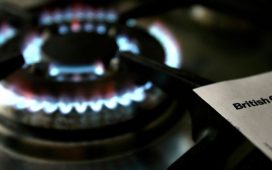Reports that Thames Water has been lobbying the government to let it increase bills by 40% come after the company’s 30-year history of giving out £7.2bn in dividends – and racking up £14.7bn in debt – has put it on the brink of collapse.
High levels of debt mean that much of customer bills are swallowed up by paying interest on company debt – with 28% of Thames’ revenue from bills spent paying interest or fees on debt on average between 2019 and 2023. That leaves less money for customer services, or investment in infrastructure.
Though Thames is one of the most vulnerable companies, the pattern is repeated across England’s water industry with almost 20p in every pound paid by customers going to servicing the industry’s significant £60.3bn debt pile.
Find out how much your bill could rise, how much your local water company spends servicing debt and which companies have been giving out the most money to their shareholders, by using our interactive tool.
Previous analysis of England’s privatised water companies has linked the industry’s signifcant £60.3bn debt pile to payouts on dividends.
Between 1990 and 2023, English water companies have paid out a total of £53bn in dividends, meaning that they have given almost the same amount to shareholders as they currently have in debt.
In contrast to the English system, at publicly owned Scottish Water, Guardian analysis found that 10% of revenue was spent paying costs associated with debt. As it is a public company with no shareholders, no dividends have been paid out, while its debts amounted to £4.1bn as of March 2023, equivalent to £1,493 per property provided with water.
Since Margaret Thatcher’s government privatised England’s water companies in 1989, debts have been piling up almost every year, going from no debt in 1989 to a combined £60.3bn between them in 2023.
While companies argue that debt has been used for investment, experts say that the debt has not been taken to finance investment but to pay “huge returns for shareholders”. Over the three decades, water companies have paid close to £53.1bn as shareholder dividends – more than £83.7bn in today’s prices.
The water companies’ five-year business plans with the proposed increase in bills will still need to be approved by the industry regulator, Ofwat, which will announce its decision in December.
Methodology
The Guardian analysed net debt and dividends from all England’s water companies using every year’s annual reports. Dividends include special and interim dividends and cover all payments out of the licensed utility under the category “dividends”. Definition of net debt and accounting periods might vary across companies.
Certain companies have changed name or merged with other companies over the 33-year period; we have analysed the documents submitted to Companies House for each of the current Ofwat water-supply licence holders.
Full explanation on how the cost of debt has been calculated can be found here, along with responses by companies to the figures uncovered by this Guardian analysis.
We collected data about the proposed increase in water bills from each of the companies’ business plans for 2025-2030.
The number of total connections per water company, provided by the Consumer Council for Water, includes household and not-household premises with a water and/or sewage connection. This has been used to normalise figures to be able to compare companies of different sizes.











